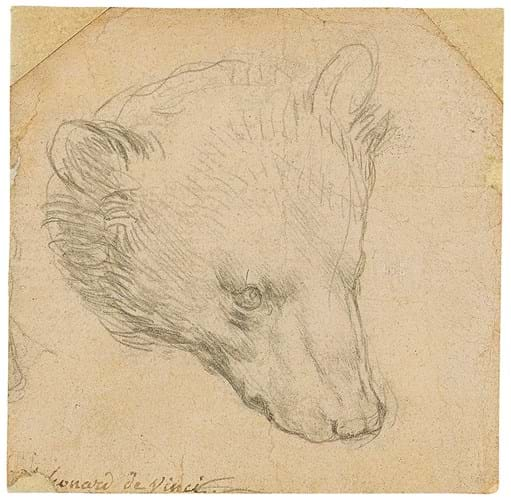With only one bidder in the room, it was knocked down below its £8m-12m estimate at Christie’s Exceptional sale this evening (July 8). The price including premium was £8.86m.
The sum was marginally above the £7.4m (£8.1m including premium) for Horse and Rider, a preparatory study for Leonardo’s unfinished masterpiece The Adoration of the Magi (now in the Uffizi), that also sold at Christie’s in July 2001 and previously held the auction record for a drawing by the artist at auction.
In 2017 Christie’s set a record for any painting ever auctioned when Leonardo’s Salvator Mundi made an extraordinary $400m (£304.2m) – $450m including premium.
Sir Thomas Lawrence provenance
Head of a Bear was one of only eight drawings by Leonardo known in private hands outside of the British Royal Collection and the Devonshire Collections at Chatsworth. It came to auction from the Leiden Collection – the private collection of Old Masters formed by American investor and asset manager Thomas S Kaplan and his wife Daphne Recanati Kaplan. The Kaplans bought it from London dealer Johnny van Haeften in 2008.
In terms of its earlier provenance, the drawing was once in the collection of Sir Thomas Lawrence (1769-1830) and then passed to his dealer (and major creditor) Samuel Woodburn, who sold it at Christie’s in 1860 for £2.50.
It was later owned by British collector Captain Norman Robert Colville (1893-1974), who also owned Raphael’s drawing Head of a Muse, a work that also sold at Christie’s in 2009 for a hammer price of £26m.
Believed to have been drawn from life, the 2.75 (7cm) square sketch was executed in silverpoint on pink-beige prepared paper and sits neatly within Leonardo’s extensive body of drawings made from nature, according to the Christie's catalogue. Comparable works include a study of two cats and a dog in the British Museum, a double-sided sheet with studies of a dog’s paws in the National Galleries of Scotland






